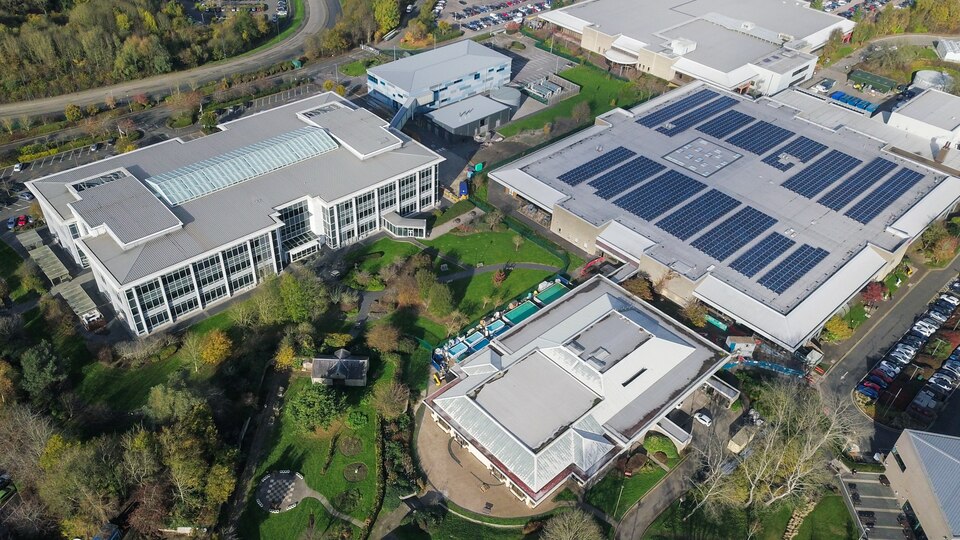Thermoelectric materials are at the forefront of modern energy recovery systems. By utilizing the Seebeck effect, these materials convert temperature differences directly into electricity. This blog explores the science of thermoelectrics and how they can be applied to improve energy systems like Power Fan. We’ll dive into how thermoelectric generators (TEGs) work, the materials used, and how they contribute to energy recovery and thermal conversion. Thermoelectrics represent a green and novel way of harvesting waste heat in ubiquitous systems.
The Science of Thermoelectrics and the Seebeck Effect
The principle of thermoelectric energy systems is based on the Seebeck effect, which occurs with the temperature difference across a semiconductor or conductor producing an electric potential. The origin of thermoelectric materials is based on this principle and is applied in thermoelectric generators (TEGs) to produce electrical power from waste heat. The efficiency of the systems is based on the ability of the thermoelectric material to maintain a temperature difference and enable the flow of charge carriers (Rowe, 2018).
Future research focuses on improving the thermal conversion efficiency of these materials through the optimization of their thermoelectric properties. Highly efficient materials such as bismuth telluride and silicon-germanium are currently used in TEGs, and there is on-going research in creating newer materials that can be utilized at higher temperatures for broader industrial applications (Goldsmid, 2019).
Materials in Thermoelectric Systems
The choice of the material is the secret to the functionality of thermoelectric devices. Thermoelectric material must have high electrical conductivity but low thermal conductivity for maximum efficiency in energy conversion. For instance, bismuth telluride is preferably utilized for low-temperature applications, while silicon-germanium alloys are more suitable for high-temperature situations (Huang, 2020).
New technology like nanostructured thermoelectrics holds the potential for highly efficient energy recovery. Through nanoscale engineering of the material, researchers can enhance its electrical conductivity while reducing its thermal conductivity. These developments open up new possibilities for using thermoelectric materials in everyday appliances to make energy recovery more readily available.
Applications of Thermoelectrics in Energy Recovery
Thermoelectrics is one of the widely used materials for energy recovery in many industries ranging from aerospace to consumer electronics. Waste and
low-grade heat can be used in heating systems to generate electricity by incorporating thermoelectric materials to these systems thermal conversion with wide variety of opportunities (Rowe, 2018).
Through applying thermoelectric generators to heating systems in homes such as Power Fan, an approach is to take some furnace systems and convert warm air straight to electricity. A new energy solution that makes it possible to lower energy bills and contribute more towards the sustainability, using already existing infrastructure. We can expect such technology to be highly scalable, and the applications to extend to thermoelectric cooling in electronics as well as low-power generators for remote areas.
Advances in Thermoelectric System Integration
One of the key challenges in applying thermoelectrics in energy recovery systems is efficiently integrating these materials into existing infrastructure. Researchers are working on new designs and technologies that make it easier to integrate thermoelectric systems into heating and cooling systems without significant modifications. Power Fan represents an example of such integration, where thermal conversion takes place without interfering with the primary function of the furnace.
Recent innovations in energy recovery technology include the development of hybrid systems that combine thermoelectrics with other energy-saving devices like heat pumps or solar panels. This multi-source approach allows for maximum energy efficiency, ensuring that no energy is wasted.
The Future of Thermoelectric Materials: Nanotechnology and Beyond
The thermoelectrics of tomorrow will probably be based on doing nanotechnology. Scientists are investigating the benefits in thermal conversion efficiency that could be had from nanostructured materials. At the nanoscale, scientists can design materials with enhanced thermoelectric properties which are more efficient than their bulk counterparts (Tritt, 2020). Such developments may in turn result in miniature thermoelectric generators incorporated into present day devices.
Carbon nanotubes and graphene in thermoelectric applications are what interests researchers most, as one can imagine building said device. This adds to the promise of these materials for energy recovery because they have high electrical conduct and very low thermal resistance. Further work will bright to realize that nanostructured thermoelectrics might make a big difference of the efficiency of systems such as Power Fan, eventually harvest more electricity per unit heat.
Conclusion
The use of thermoelectrics in energy recovery systems represents a significant leap forward in sustainable energy technology. By harnessing the Seebeck effect and other thermoelectric principles, devices like Power Fan offer an innovative way to convert wasted heat into usable electricity. As material science advances, thermoelectric systems will become more efficient, helping to further reduce energy consumption and carbon footprints.




